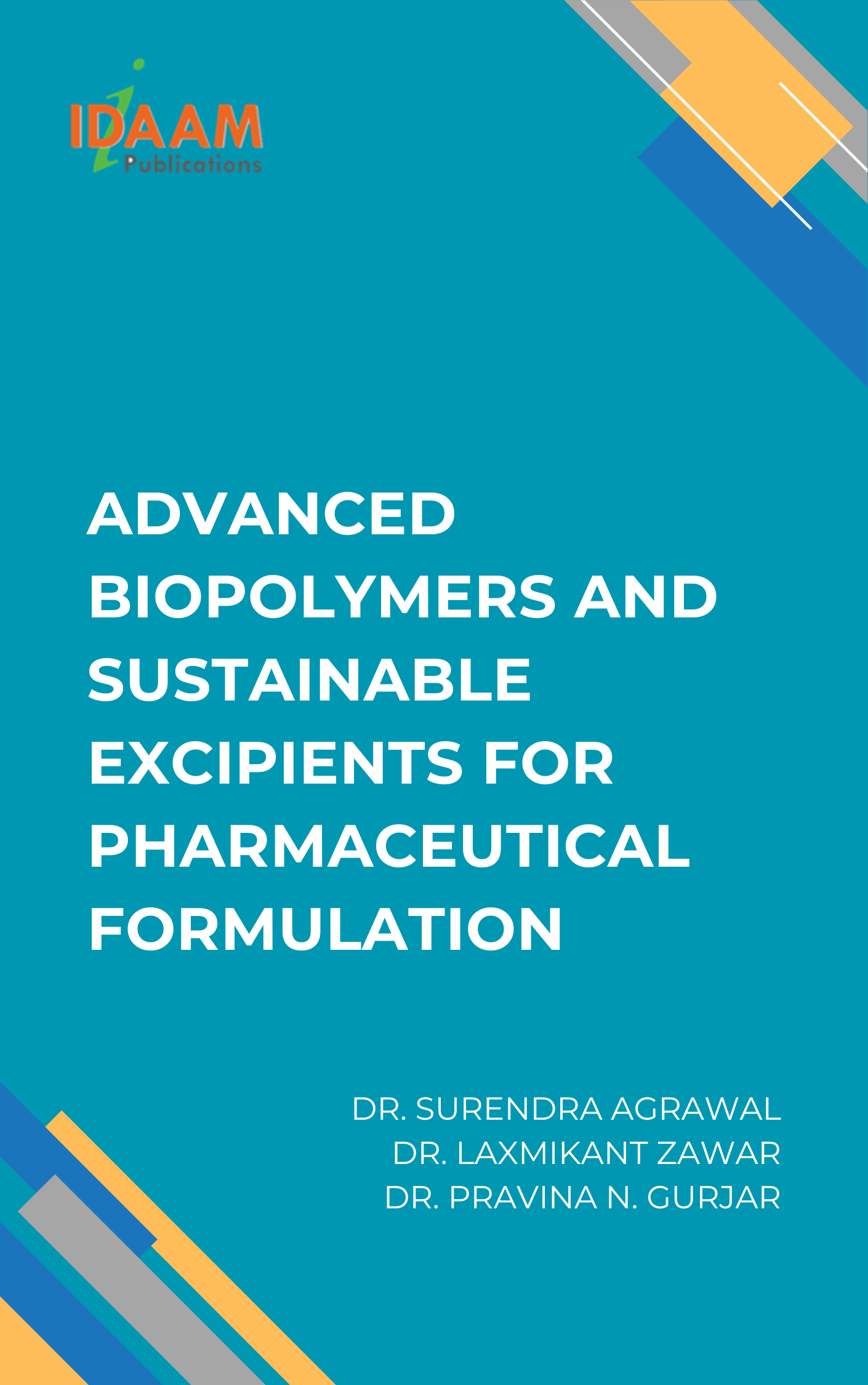
Advanced Biopolymers and Sustainable Excipients for Pharmaceutical Formulation
(The book will be published with an ISBN)
Submit chapter abstract (250-300 words) along with table of content to books.idaampublications@gmail.com
About The Book:
The book “Advanced Materials in Pharmaceutical Formulations: Biopolymers, Hybrid Systems, and Sustainable Excipients” explores the evolving landscape of creative excipients and functional materials in the realm of pharmaceutical delivery. This edited collection highlights the importance of biopolymers, polymeric blends, hybrid nanoparticles, and eco-friendly excipients in enhancing drug stability, bioavailability, and patient adherence. The book presents a thorough exploration of sustainability, regulatory perspectives, and innovative technologies such as 3D printing and intelligent systems, catering to researchers, formulators, and industry professionals alike. It connects important scientific ideas with practical uses, aiming to change how drugs are made and delivered today by focusing on sustainable, efficient, and patient-friendly methods.
Tentative Table of Contents:
Part I: Foundations and Regulatory Landscape
Chapter 1:Introduction to Advanced Materials in Pharmaceutics• Overview of novel materials in drug formulation
• Need for biocompatibility, sustainability, and functionality
• Global trends and regulatory outlook.Chapter 2:Biopolymers as Functional Excipients: Classification and Properties• Natural, semi-synthetic, and synthetic biopolymers
• Physicochemical and rheological characteristics
• Pharmaceutical acceptability and performance).Chapter 3:Regulatory Aspects of Novel and Sustainable Excipients• GRAS status and compendial guidelines
• Novel excipient approval pathways (FDA, EMA)
• Safety, toxicity, and compatibility concerns
Part II: Natural Polymers and Their Pharmaceutical Applications
Chapter 4:Chitosan and its Derivatives in Controlled Drug Delivery• Solubility modulation, mucoadhesion, and permeation enhancement
• Nanoparticles, hydrogels, and transdermal systems- Chapter 5: Alginate, Carrageenan, and Pectin in Oral and Injectable Formulations
• Gelation behavior, ionotropic crosslinking, and drug entrapment
• Gastroretentive and injectable depot formulations Chapter 6:Cellulose-based Excipients in Solid Dosage Forms• Microcrystalline cellulose, HPMC, ethyl cellulose
• Role in matrix tablets, pellets, and oral filmsChapter 7:Food and protein based Polymers as Pharmaceutical Carriers• Xanthan gum, guar gum, starch, zein, Casein, Gelatin, and Silk Fibroin
• Self-assembly, structural diversity, and biodegradability
• Injectable, transdermal, and ocular systems
Part III: Hybrid and Engineered Materials for Advanced Delivery
- Chapter 8: Polymeric Blends and Interpenetrating Networks (IPNs)
• Physicochemical synergy of polymers
• Applications in thermosensitive and pH-responsive systems - Chapter 9: Inorganic-Organic Hybrids: Metal-Organic Frameworks (MOFs) and Silica-Based Systems
• Drug loading, targeting, and controlled release
• Biomedical applications and toxicity considerations Chapter 10:Lipid-Polymer Hybrid Nanoparticles for Advanced Drug Delivery• Structural advantages and encapsulation efficiency
• Cancer, brain, and vaccine delivery systems- Chapter 11: Biodegradable and Compostable Materials for Packaging and Delivery
• Bioplastics, starch blends, PLA, PHA
• Intelligent pharmaceutical packaging
Part IV: Emerging Technologies and Future Perspectives
- Chapter 12: Agricultural and Food-Derived Polymers in Drug Delivery
• Xanthan gum, guar gum, starch, zein
• Utilization of agri-waste and value addition. - Chapter 13: Role of Advanced Materials in Personalized and 3D Printed Dosage Forms
• Tailored release profiles
• Printable bioinks and regulatory pathways - Chapter 14: Challenges and Future Prospects in Translating Advanced Materials to Clinics
• Scale-up, reproducibility, and cost constraints
• Emerging trends: AI-driven materials, responsive polymers, and smart excipients
[Note: Strikethrough chapters (1, 2, 3, 4, 6, 7, 10) are already been taken by other authors].
About Editors:

Dr. Surendra Agrawal
Professor,
Datta Meghe College of Pharmacy, DMIHER (DU), Sawangi Meghe Wardha, Maharashtra

Dr. Laxmikant Zawar
Associate Professor and HOD,
H R Patel Institute of Pharmaceutical Education and Research, Shirpur, Maharashtra

Dr. Pravina N Gurjar
Professor,
Jagadamba Institute of Pharmacy & Research Kalamb, Dist Yavatmal
Important Dates:
• Abstract Submission: by 25ᵗʰ November 2025
• Abstract Acceptance: by 30ᵗʰ November 2025
• Full Chapter Submission: by 31ˢᵗ December 2025
• Full Chapter Acceptance: by 15ᵗʰ January 2026
Chapter Processing Charge (CPC):
A Chapter Processing Charge (CPC) is required to cover the costs of typesetting, processing, and global online hosting. All corresponding authors will be asked to pay their publication charges upon acceptance of abstract as Chapter Processing Charge –
USD 100 (for overseas authors), INR 3000 (for authors from India) per published chapter (Maximum 3 Authors per Chapter).






























